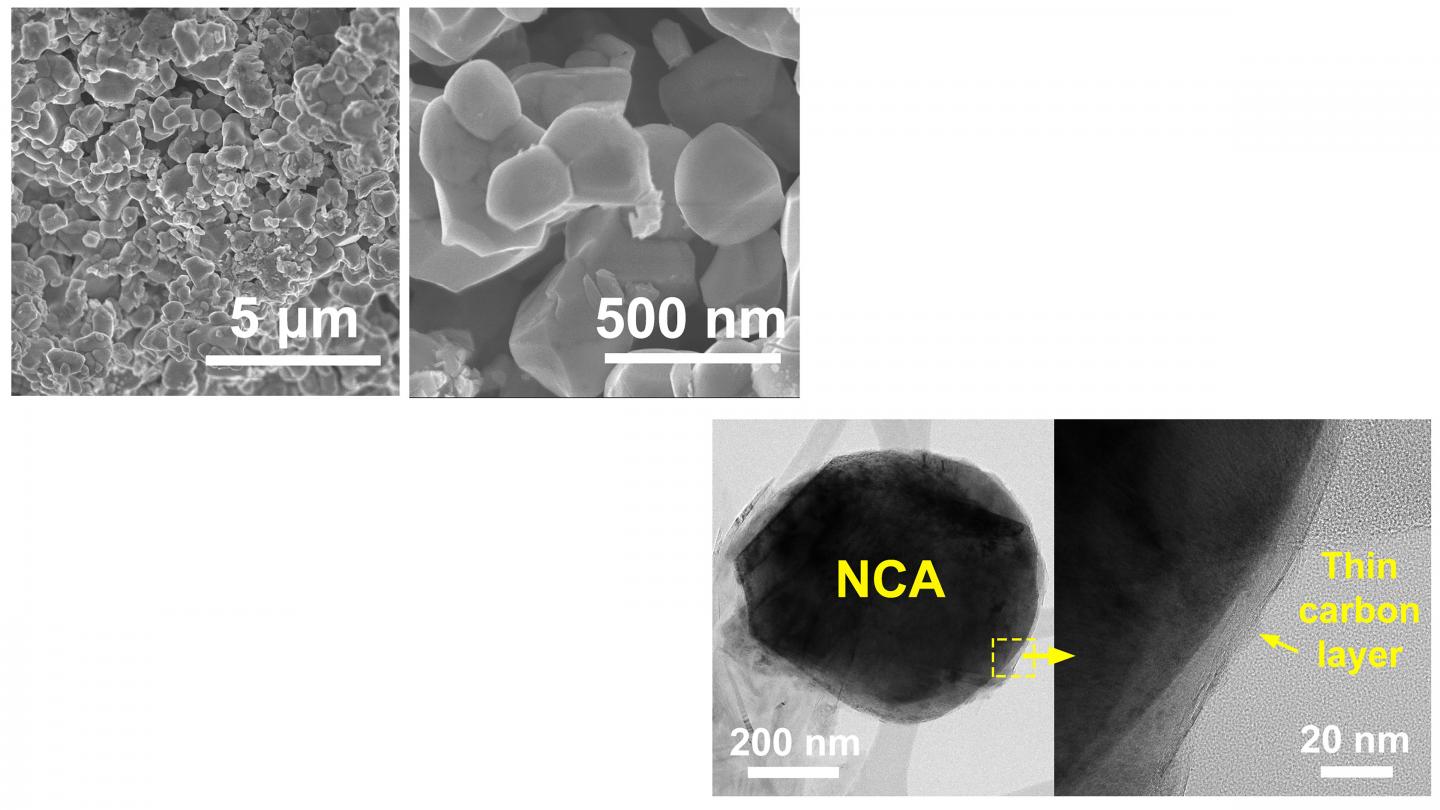Author:
American Institute of Physics
Date
11/26/2020

In the Journal of Vacuum Science and Technology A, researchers investigate the origins of degradation in high energy density LIB cathode materials and develop strategies for mitigating those degradation mechanisms and improving LIB performance. Figure 1: Scanning electron microscopy images of as-synthesized NCA at different magnifications. Figure 2: Transmission electron microscopy images showing the surface of the Gr-R-nNCA particles
Lithium-ion batteries (LIBs) that function as high-performance power sources for renewable applications, such as electric vehicles and consumer electronics, require electrodes that deliver high energy density without compromising cell lifetimes.
In the Journal of Vacuum Science and Technology A, by AIP Publishing, researchers investigate the origins of degradation in high energy density LIB cathode materials and develop strategies for mitigating those degradation mechanisms and improving LIB performance.
Their research could be valuable for many emerging applications, particularly electric vehicles and grid-level energy storage for renewable energy sources, such as wind and solar.
"Most of the degradation mechanisms in LIBs occur at the electrode surfaces that are in contact with the electrolyte," said author Mark Hersam. "We sought to understand the chemistry at these surfaces and then develop strategies for minimizing degradation."
The researchers employed surface chemical characterization as a strategy for identifying and minimizing residual hydroxide and carbonate impurities from the synthesis of NCA (nickel, cobalt, aluminum) nanoparticles. They realized the LIB cathode surfaces first needed to be prepared by suitable annealing, a process by which the cathode nanoparticles are heated to remove surface impurities, and then locked into the desirable structures with an atomically thin graphene coating.
The graphene-coated NCA nanoparticles, which were formulated into LIB cathodes, showed superlative electrochemical properties, including low impedance, high rate performance, high volumetric energy and power densities, and long cycling lifetimes. The graphene coating also acted as a barrier between the electrode surface and the electrolyte, which further improved cell lifetime.
While the researchers had thought the graphene coating alone would be sufficient to improve performance, their results revealed the importance of pre-annealing the cathode materials in order to optimize their surface chemistry before the graphene coating was applied.
While this work focused on nickel-rich LIB cathodes, the methodology could be generalized to other energy storage electrodes, such as sodium-ion or magnesium-ion batteries, that incorporate nanostructured materials possessing high surface area. Consequently, this work establishes a clear path forward for the realization of high-performance, nanoparticle-based energy storage devices.
"Our approach can also be applied to improve the performance of anodes in LIBs and related energy storage technologies," said Hersam. "Ultimately, you need to optimize both the anode and cathode to achieve the best possible battery performance."
EurekAlert!, the online, global news service operated by AAAS, the science society: https://www.eurekalert.org/pub_releases/2020-11/aiop-che112320.php